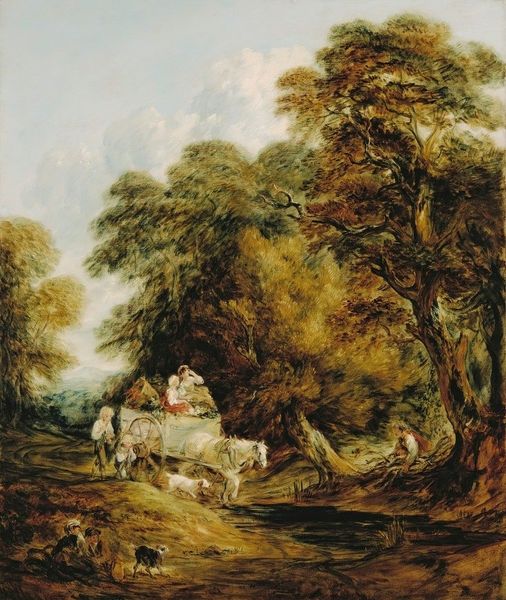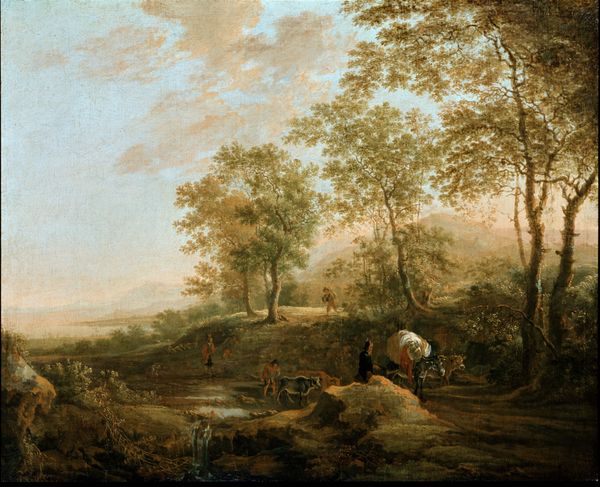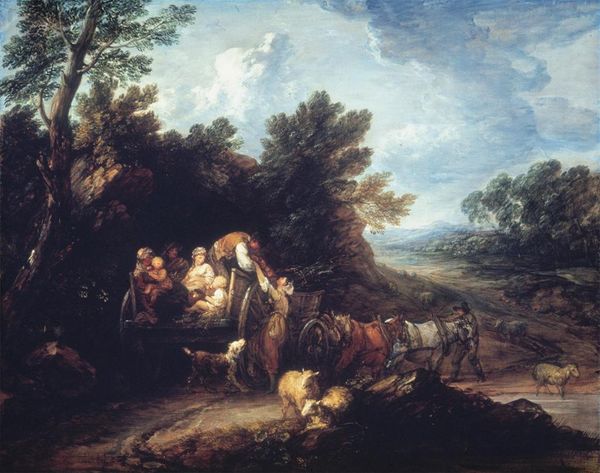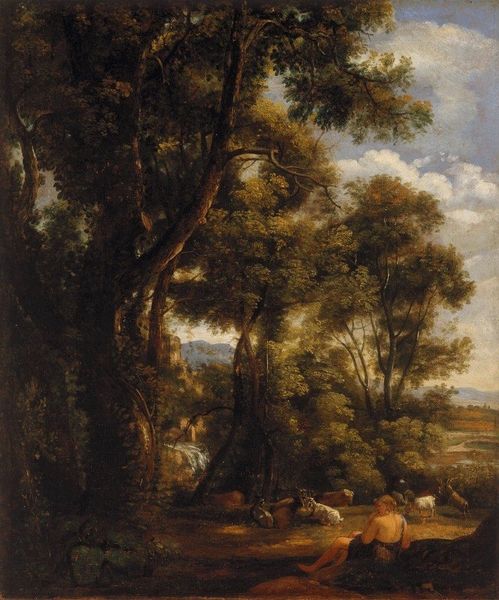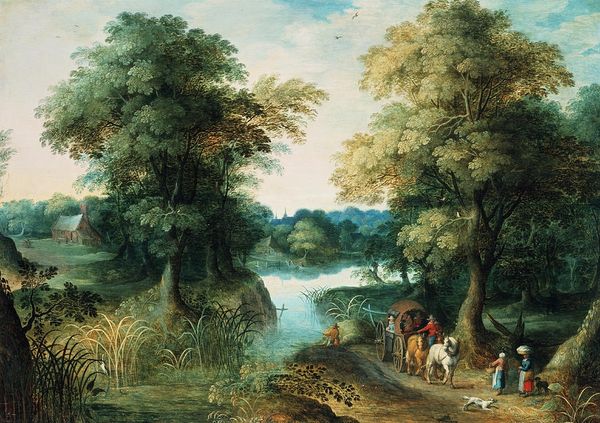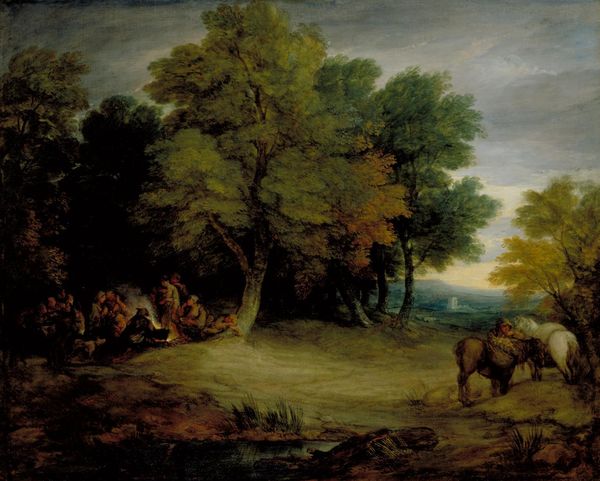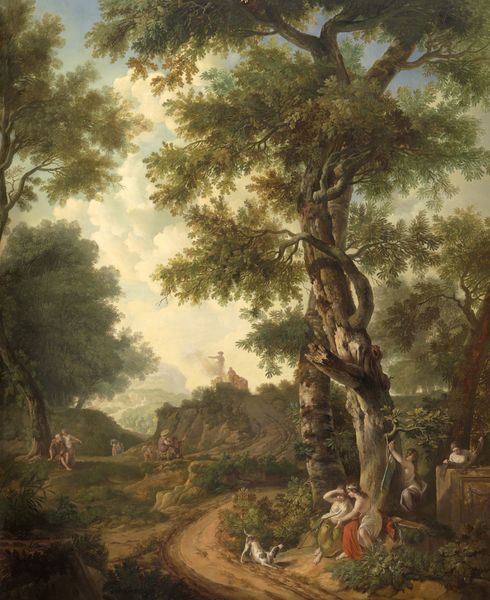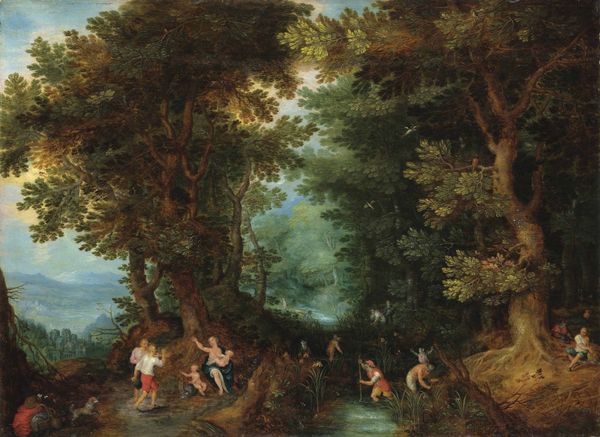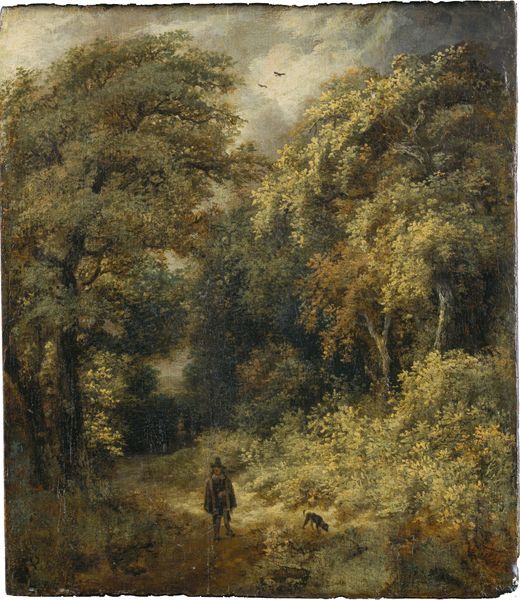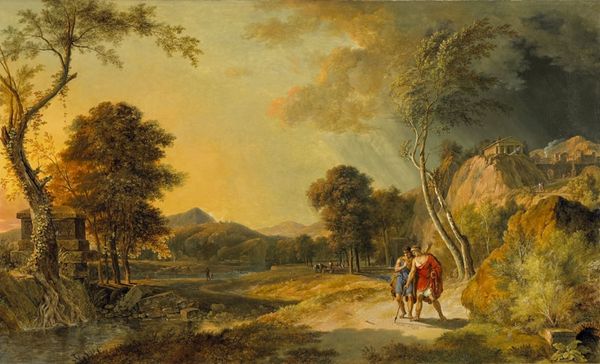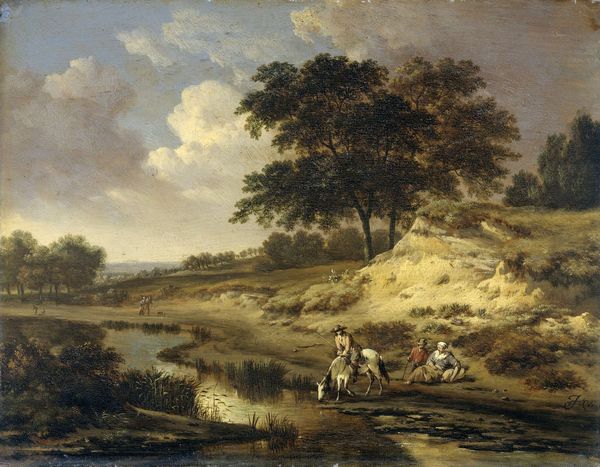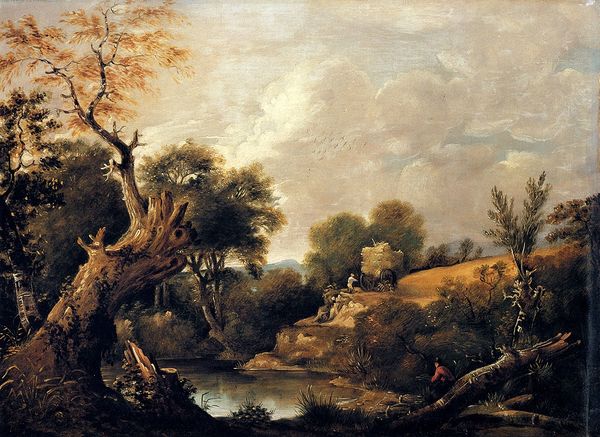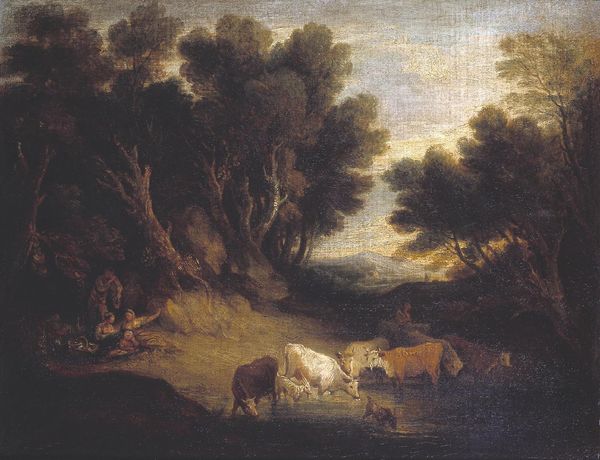
Copyright: Public domain
Curator: This is "The Market Cart," painted by Thomas Gainsborough in 1786, now residing here at the National Gallery. He captured it in oil paint. Editor: Immediately, I’m struck by the dynamic brushwork. See how the trees almost dissolve into swirling masses of color. It evokes a certain transience, a moment captured in time. Curator: Absolutely. The painting reflects a nostalgic ideal of rural life. The cart, laden with goods and people, suggests communal activity, a subtle emblem for the pastoral charm which had immense appeal amidst urbanization in 18th century London. It speaks of a simpler time. Editor: Yet it’s more complex than a simple longing for the past. Gainsborough’s use of impasto, especially in the foliage, is remarkable. Note how the texture creates light effects, adding a shimmering quality to the scene. There is a real focus on capturing light and movement with those textural contrasts. Curator: Yes, the symbolism lies not only in the subject but in how Gainsborough paints it. The idealized countryside can be read as representing purity. It mirrors something fundamental within the national soul, the kind that's often sought and found outside metropolitan realities. Notice that even the resting figure to the right may be seen to embody ease. Editor: That darker, ambiguous tone almost complicates the picture, doesn't it? Although superficially pleasing, look at how the tonal arrangement casts one third of the landscape to shade, obscuring narrative clarity while enhancing compositional depth and volume. I think this elevates Gainsborough’s composition from just ‘pleasant’ to compelling! Curator: I see what you mean. "The Market Cart" really reflects our long relationship with a past as seen through the arts. Editor: Indeed, a relationship of great beauty.
Comments
No comments
Be the first to comment and join the conversation on the ultimate creative platform.
